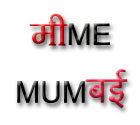The textile industry boom 1854 made Mumbai a major industrial hub in the country. During the later 19th century the industry grew significantly thus contributing to Mumbai’s prosperity.
Girangaon in Central Mumbai is the place where it had 130 textile mills and contributed to the growth of textile and cotton industry. It covered an area of almost 600 acres.
In 1982 major strike of 18 months, the mills were permanently closed and triggered the end of the struggling industry. Later Phoenix mill, Dawn Nill at Lower parel, Kamla mills, Zenzi mill and other general mill industry was survival source to lakhs of mill workers in Mumbai, which is now were sold out and converted to commercial complexes, malls and high rise buildings.
Here is the chronological order of rise and fall of textile mills in Mumbai:
1854 – Cowasji Nanabhai Davar set up first mill, called the Bombay Spinning Mill. It produced cotton textiles for Britain.
1860s to 1915 – There was significant rise in mills from 13 in 1870 to 70 in 1875. Later 83 mills in 1915. This encouraged hand workers from Konkan to settle in Lalbaug and Parel.
1920s to 1960s – Shripad Amrit Dange founder of CPI lead the mill workers union since 1920s and had strikes in 1928 and 1929. Left had control over the union till 1960s and later Shiv Sena took over known as Bharatiya Kamgar Sena. With decline of Left, coincidently textile industry too started declining.
1982 – On 18th January, 2.5 lakh workers went on strike against Bombay Mill Owners Association under the leadership of Datta Samant. They demanded bonus and increase in wages. The strike proved to be disaster with closure of 58 mills and making 1.5 lakh workers jobless.
1991 – The state government brought in Development Control Rule 58, which states that mill owners can sell his mill’s land by fulfilling following rules:
a. BMC should be handed 1/3rd land ,
b. MHADA to get 1/3rd land. Out of which half land should be given to housing projects for mill workers.
c. 1/3rd land is to be developed by Mill owner
2001 – The DC rule was amended and the state government said that it applied only to “open land” and not all the land of the mills. The open land came to just over 100 acres out of total 600 acres of textile mill land.
2005 – In March 2005, the National Textiles Corporation (NTC) had 25 mills in the city worth nearly Rs 5000 crore. They sold their mills in following way:
1) Sold Jupiter Mills to IndiaBulls for Rs 276 crore.
2) In June, the Mumbai Textile Mills was sold for Rs 702 crore,
3) In July, Kohinoor Mill number 3 was sold to Manohar Joshi and Raj Thackeray for Rs 421 crore.
2006 – The Supreme Court said the sale of te mills was legal and that hanges to the rules for developing mills were valid.
2010 – NTC has decided to reopen three mills – India United Mills no. 5 at Kalachowkie, Podar Mills at Chinchpokali on January 19 and Tata Mills at Hindmata.








